This month we provide an update on the Hôpital de la Miséricorde and analyze controversial plans by Hydro-Québec to integrate an electricity substation into the haunted site. The ghost-ridden Hôpital de la Miséricorde has been empty for years and is starting to crumble. Located on prime real estate in Downtown Montreal...
Welcome to the fifty-second installment of the Haunted Montreal Blog!
With over 300 documented ghost stories, Montreal is easily the most haunted city in Canada, if not all of North America. Haunted Montreal is dedicated to researching these paranormal tales, and the Haunted Montreal Blog unveils a newly-researched Montreal ghost story on the 13th of every month! This service is free and you can sign up to our mailing list (top, right-hand corner for desktops and at the bottom for mobile devices) if you wish to receive it every month on the 13th!
With the Hallowe’en season behind us, Haunted Montreal is moving into winter mode. We are pleased to announce that the Haunted Montreal Pub Crawl runs year round on Sunday afternoons. We are also looking for an indoor haunted location for our new Paranormal Investigation. Lastly, our ghost walks can still be booked for private groups, including Haunted Mountain, Haunted Griffintown and Haunted Downtown.

Our December blog examines the Hôpital de la Miséricorde, an abandoned hospital that separated single mothers from their children under horrific conditions in the past. It is reported to be haunted by tortured spirits of a former era when strict and oppressive Catholic doctrine ruled the day across Quebec.
Haunted Research
The former Hôpital de la Miséricorde is just one of many now-vacant hospital complexes in Montreal, in the wake of decisions to centralize services in two “superhospitals”. During its sordid past, thousands of orphans were falsely diagnosed with mental illnesses and unmarried teenage mothers were housed in hostile conditions within the walls of the former “Hospital of Mercy”.

Today, the building is abandoned by the living – but certainly not the dead! Considered a paranormal hotspot by ghost-hunting experts, there are many stories of disembodied children’s voices crying, sounds of clanging and abuse, not to mention the spirits of angry nuns and a fearful young mother.
To put things in context, Montreal was a very Catholic city from the founding of the Ville-Marie colony is 1642 up until the Quiet Revolution of the 1950s, when its power began to wane.

This was especially true for citizens of French and Irish ancestry.
Due to patriarchal Catholic doctrine, there were very strict rules to follow in life and any serious violation could have severe consequences. Misogyny has been rampant in the church for many centuries due to the early fathers engaging in theological debates that questioned whether women had souls. In the 12th century, influential theologian Thomas Aquinas described women as “mis-shapen men”, and clearly saw them as being inferior.
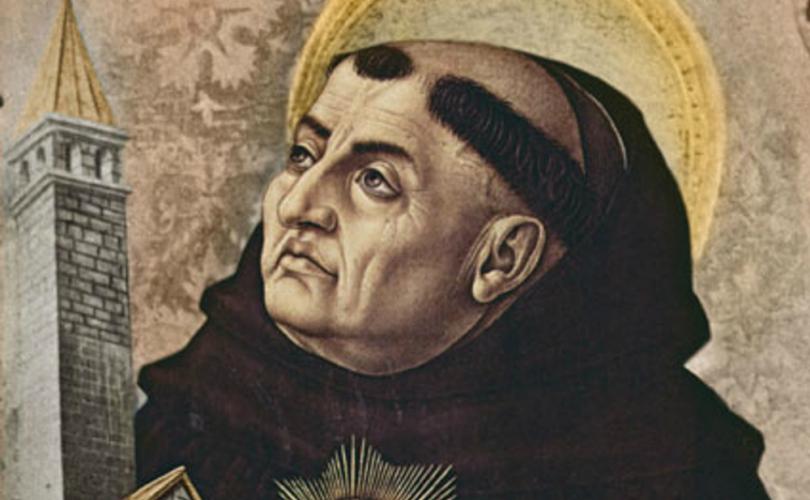
During the Middle Ages, in the era of the Inquisition, many powerful female mystics were persecuted. Some were even burned at the stake, condemned as witches.
Furthermore, any woman who had a child out of wedlock was considered thoroughly “fallen” and disgraced within the Catholic society. The child was also severely stigmatized and often alienated and excluded.

In the mid-1800s, a narrow, rocky lane called Woodyard led down to the river starting at today’s René Lévesque Boulevard at the corner of St-André Street. In many cases, panicking single mothers would stumble down the rocky lane to the shoreline, child in arms. In a state of despair, some of them threw their babies, and sometimes themselves, into the dangerous and fast flowing waters.

To prevent such incidents, the Catholic Church wanted institutions where unmarried women could be sent to deliver their children under a veil of secrecy, silence and shame. It was not uncommon for unwed mothers to be shamed into surrendering their children to the church. A powerful stigma was attached to unmarried motherhood, and abortion and the sale of contraception were criminal offences.
At the instigation of Bishop Ignace Bourget, the Congregation of the Sisters of Misericorde religious community was founded in 1848 by Rosalie Jetté. Marie-Rosalie Cadron Jetté, also known as “Marie of the Nativity”, was a widow and midwife who undertook the overseeing of unwed and struggling mothers between 1840 and 1864.
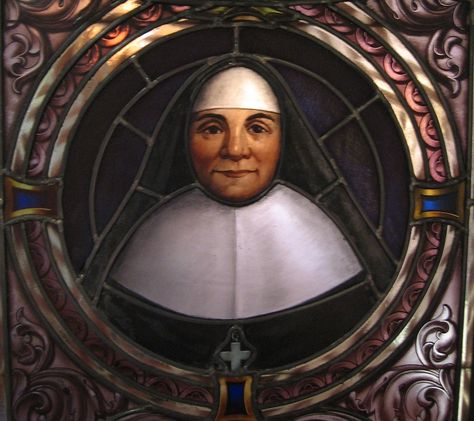
The Sisters were dedicated to housing and reforming single mothers, kids born out of wedlock and abandoned children in order to ensure compliance with strict Catholic doctrine.
They opened the first Hôpital de la Miséricorde on the corner of Ste-Catherine Street and St-André. After occupying this and other premises, which had become too cramped, the Sisters of Mercy ordered the construction of the first section of their hospital on today’s René-Lévesque Boulevard East (formerly Dorchester) in 1853.

Over the next several decades, the facility was expanded several times.
The Catholic religious orders prioritized work over education. The sons of unwed mothers could not legally inherit from their biological parents and could not become priests unless they had a special exemption. For many, this meant a life of deprivation, religious indoctrination, and feelings of guilt for their characterization as “children of sin.”

The church was also poorly equipped to care for them. Orphanages had limited resources, and each nun was often responsible for watching at least ten children under the age of two.
A Quebec Ombudsman wrote in one of his reports that “the majority of children spoke only in sounds until the ages of 4 to 6, and were incapable of telling time, eating with utensils, getting around, washing themselves, etc.

In one trade school, up to 25% of the children between 9 and 16 were found to be bed-wetters.”
The typical procedure was to bring so-called “fallen” pregnant women to the hospital to keep them out of sight in a cloistered environment. When their babies were born, they were immediately confiscated and placed within the orphanage.

Their children were given away for adoption, forced to do cheap labor, or much, much worse.
Furthermore, just two weeks after giving birth, the unwed mothers were expected to work for six months in the hospital to pay a debt for the “services” of the Sisters.

According to historian Jean-François Nadeau: “They live cloistered, in shame.” He mentions that at the moment of their reception, the nuns gave them a temporary name, such as Humiliance or Fructueuse, in order to remind them of the sin they had committed.
“Imagine: you’re pregnant, you’re left alone, and you’re forced to call yourself Fertile for six months,” said Nadeau, adding: “An aide who was here as a nurse told me several years ago that she had seen one of these young women try to jump into the void from one of the floors to kill herself.” The historian concludes that the hospital was a “factory of poverty”.

There are also allegations that some of the orphans were experimented upon by demented doctors, such as Ewen Cameron and Heinz Lehmann
According to researcher and blogger Ann Diamond:
“I have a photo of Doctors Ewen Cameron and Heinz Lehmann standing with a group of other doctors outside the Misericorde Hospital in Montreal in 1959. This was a hospital for unwed mothers and also an orphanage. At the time Lehmann was directing the research institute of the Allan Memorial. What are two McGill psychiatrists doing in a group photo on the steps of this hospital? What legitimate reason would they have to be there? I am guessing the secret reason is they are setting up an agreement to get children for use in experiments. We know there were orphans living in a sealed off wing of the Allan in those years.”
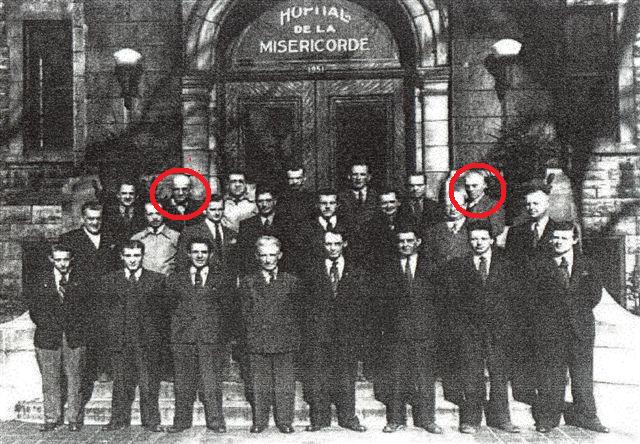
Diamond continues:
“Cameron and Lehmann were key figures in what appears to have been a eugenics program operating out of McGill. Lehmann had trained in Nazi Germany at precisely the universities where the infamous T4 eugenics program was developed. He came to Quebec in 1937 and was soon placed in charge of a major psychiatric hospital known as a place where patients were zombified with drugs and ECT.”

With changing times and practices, notably the secularization of health services, the hospital finally closed in 1975.
A total of 159,665 babies had been born and processed since its inception in 1845. In a delivery room on the third floor of an 1873 hospital extension (today’s 850 René-Lévesque East), nearly 50,000 babies were delivered, taken from their unwed mothers and transformed into orphans.

The Jacques-Viger residential and long-term-care centre (CHSLD) took over and occupied the facility for several decades until recently, when it streamlined and relocated its operations. The original structure had begun to deteriorate and fall into ruin, forcing the occupants to vacate.
Today, the hospital is abandoned by the living, but not by the dead, according to survivors and paranormal experts.
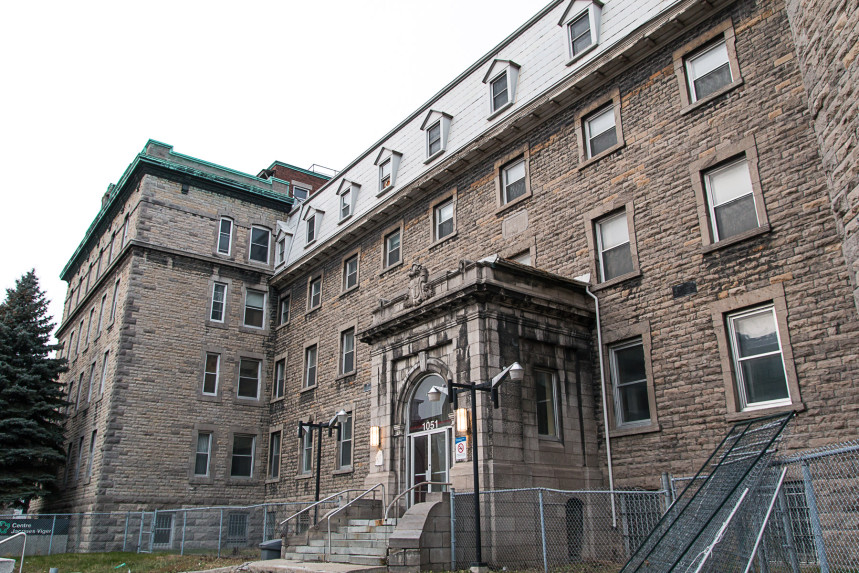
According to many survivors of the hospital, it is haunted, as discussed on various threads on Internet forums. One of them claimed:
“In the part where the unwed mothers were kept, one can hear crying and lamentations emanating from the old walls of wood and plaster. It is thought that the lives and sufferings of those unwed mothers will remain forever in these long corridors.”

Another added: “There was too much suffering in this place, to be forgotten.”
One survivor, who visited in 2003, claimed: “When we walked in this wing of the hospital where the single mothers gave birth, which has been abandoned for several years now, we can still hear this crying of the abandoned little ones. There are also the groans, the tears, the prayers of these single mothers, which are like the cries of the abandoned little ones, impregnated in the walls and woodwork of this establishment. We still hear them today in 2003.”

Yet another victim claimed: “The nuns who were at the nursery were very inhuman… Animals were treated better than the orphans,” before asking “Are there any other survivors who were whipped by some religious authority before or after giving birth to their children, or when they entered?”

Considered a paranormal hotspot by ghost-hunting experts, there are many stories of disembodied children’s voices wailing and crying throughout the hospital’s corridors, not to mention occasional sounds of abuse such as whipping, lashing and clanging noises.
On one occasion, a ghost hunter even detected what he swears were “the spirits of three angry nuns” rushing down a corridor, wielding three large wooden spoons. These kitchen utensils could easily double as weapons and were often used to beat the orphans or single mothers.

He also detected the translucent ghost of a fearful young single mother, who was spotted crouching in a corner – cowering in tears. When he asked:” Are you OK?” she looked up at him with tears in her eyes, shook her head in sorrow and then slowly de-materialized.
While there has been talk of demolishing the old Hôpital de la Miséricorde, its future is unknown at this point.
Today, its founder, Marie-Rosalie Cadron Jetté is commemorated with two museums. In 1998, the Misericordia Sisters’ Museum opened to the public in Montreal.

The purpose of the museum is to inform the public about “this relatively unknown and controversial story, even today.” On February 27, 2019, the Misericordia Sisters’ Museum closed for renovations. According to its website, it will reopen once the work is completed.
There is also La Maison Rosalie-Cadron in Lavaltrie, which is the house where she grew up.

Lastly, Marie-Rosalie Cadron Jetté may one day become a Catholic Saint, as recommended by Bishop Ignace Bourget. The Vatican is studying her cause for canonization and Pope Francis declared her “Venerable” in 2013.
In conclusion, the former Hôpital de la Miséricorde is literally a crumbling architectural reminder of the dark Catholic past that used to haunt Montreal City and Quebec. With the waning of the Church starting during the Quiet Revolution, today the abandoned hospital contains sickening paranormal reminders of the deranged past era.

Vulnerable babies were ripped from their mothers and thrown into orphanages due to patriarchal and religious doctrine and enforcement. It’s no wonder their desperate cries can still be heard today emanating from the crumbling plaster walls of the hospital’s long corridors.
Company News
Haunted Montreal is now into winter mode! For this first time ever, we will be operating year-round with our award-winning Haunted Pub Crawl, every Sunday at 3 pm in English and 4 pm in French.

Private tours are also available, weather permitting, for Haunted Griffintown, Haunted Downtown, the Haunted Pub Crawl and our new Paranormal Investigation into the old Saint-Antoine Cemetery.
The Haunted Mountain Ghost Walk is not offered in the winter due to dangerous and icy conditions on the slopes.

In other news, Haunted Montreal is disappointed that the Black Rock Famine Cemetery has been disturbed again. This time the REM has planted a pylon into the heart of the mass graveyard, removing over 15 skeletons of Irish Famine victims in the process. The Irish community is upset. At the same time, Mayor Valerie Plante is proposing to co-brand the Griff’s REM Station “Griffintown-Bernard-Landry”. The Irish community has asked her to withdraw the proposal and Haunted Montreal agrees.
If you support the Montreal Irish community, please write to the Mayor and ask her to withdraw the proposal. Montreal Mayor Valerie Plante can be reached here.

Haunted Montreal would like to thank all of our clients who attended a ghost walk, haunted pub crawl or paranormal investigation during the 2019 season!
If you enjoyed the experience, we encourage you to write a review on our Tripadvisor page, something that helps Haunted Montreal to market its tours. Lastly, if you would like to receive the Haunted Montreal Blog on the 13th of every month, please sign up to our mailing list.
Coming up on January 13: Réseau Express Métropolitain’s Ghostly Gamble
Will the Réseau express métropolitain (REM) become haunted due to an Irish Famine cemetery disturbance? The REM is a new automated light rail network under construction in the greater Montreal area. At a cost of $6.3 billion, it will include 26 stations and span the greater Montreal region. In November, workers digging a hole for a pylon near the Victoria Bridge discovered the bones of over a dozen Irish Famine victims from 1847 at the site of the Black Rock. Given these Irish refugees were fleeing westward, it is entirely possible their disturbed spirits will rise up to haunt the electric train network.

Donovan King is a postcolonial historian, teacher, tour guide and professional actor. As the founder of Haunted Montreal, he combines his skills to create the best possible Montreal ghost stories, in both writing and theatrical performance. King holds a DEC (Professional Theatre Acting, John Abbott College), BFA (Drama-in-Education, Concordia), B.Ed (History and English Teaching, McGill), MFA (Theatre Studies, University of Calgary) and ACS (Montreal Tourist Guide, Institut de tourisme et d’hôtellerie du Québec). He is also a certified Montreal Destination Specialist.



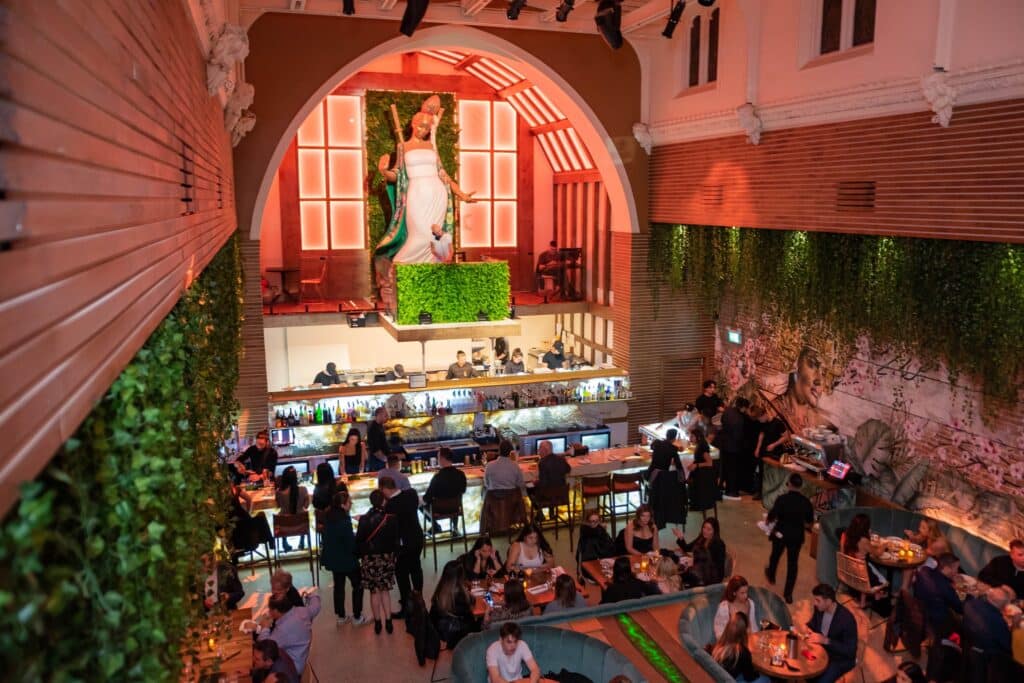
Thank you so much for the stories. Loved reading it. -Jenn
A few reflections.
I am a 78 years old man, very interested in ” the other world” ( If there exists one..), even more interested now that I may become part of it in a not-too-distant future ( hopefully, though, as distant as possible.)
I fully endorse the Haunted Montreal initiative. Unfortunately, I have been so far unable to participate in your guided tours. even though I was planning to , last year, but I had to postpone it for personal engagements. I’ll catch up next year.
I am an educated person with two university degrees .Even though I consider myself fully rational, I am also an open minded person, ever mindful that humankind’s history has been a continuous voyage of discovery and a constant shifting of frontiers from the impossible to the possible. .
My reflexions and experiences lead me to believe that there is a spiritual, or non material reality.
Within my family, I had a relative who, in spite of being himself a very educated person with a university degree in chemistry, was deeply involved in spiritism .
He claimed to be constantly in touch with a guide spirit, who counselled him about his personal life and his spiritual duties.
This uncle, at the time an elderly person, now long dead, claimed to have been able since youth to summon spirits while in trance, until he decided to abandon his spiritual pursuit, under pressure from his deeply catholic family, who believed that spiritism was an instrument of the..devil.
This uncle recounted that his guide spirit warned him that ” THEY” would take away from him his : gift” of mediumship if he were to yield to the family’s pressure. and this is exactly what happened : sadly, he lost his gift forever. Somewhat intriguing..
Anybody who didn’t know him, would have dismissed his story as a figment of a sick mind, but I know he was not mentally ill..
Neither was I mentally ill when, as a young student in my teens growing up in Italy, I witnessed myself an exorcism being performed by a friar on an allegedly possessed elderly woman .
I must say that, but for my ” rational” belief that she may have been only mentally ill, what I saw would have given me the creeps, if I truly believed to be in the presence of the devil. t still vividly remember how the woman pounced at the friar like a rabid animal every time the exorcist would sprinkle her with ” holy” water, brandishing the Holy Cross and pronouncing the name ” Deus” or God in Latin ( in those days , before the Vatican II Council, the exorcisms and the whole Catholic liturgy were in Latin)
Your blog, which I read with the utmost interest and pleasure, especially the historical background of the infamous Hôpital de la Misericorde, cites Thomas Aquinas as a bigot holding the degrading view that women are no more than misshaped or imperfect men..( worse, he even said that women are an ” Accidens in utero” ( Latin for a mishap or accident in the uterus)
One can only deplore such retrograde and degrading views under the Catholic banner, but this was perhaps an inevitable part of the ” Zeitgeist” or the ” spirit of the times” and as such it shouldn’t entail an overall condemnation of the Catholic religion., just as we don’t normally hold the Greco-Roman civilization of which we are tributaries any less great because it was based on slavery and a different concept of women that is repugnant to our values. .
I am not here to defend the Catholic Church. I’ll only remind that it has always engaged also in commendable social work, through a variety of institutions and organisations, not only the infamous Hôpital de la Misericorde, but through countless other organizations devoted to helping the sick , the poor and the oppressed, across the world, through missionary work or other..
Here in Montreal, Jeanne Mance, Les Soeurs de la Charité and l’Hôpital Dieu will always be remembered. ,. I..
I don’t know whether for the organizers of Haunted Montreal the question of ghosts and their hauntings is just one of curiosity and folklore, or if there are some who really believe and perhaps experienced these phenomena, even your guide who hosts the tours…. Interesting to know..
The question of whether ghosts really exist or not, must be plotted against the broader context of the debate between faith and reason, a debate that has engaged thousands of intellectuals in both camps : the believers and the non-believers.
Ghosts and possessed people may well be the figments of misguided, perhaps sick minds. This is one explanation and it probably applies to most of those who report these phenomena.., but there are cases where the ” supernatural” may well be at work.
There are members of the Catholic clergy who, while routinely performing exorcisms, are at the same time psychologists and/or psychiatrists.
While admitting mental health problems in many cases, they are also able as exorcists to clearly discern the signs of the supernatural and true possession.
While witnessing myself the above mentioned exorcism, it was difficult not to think ( or, better, feel) that something truly extra-ordinary was at work. I’ll never know .
I’ll conclude by saying that the Catholic Church, for all its wrong views and deeds, also had the insight to remind man that when it comes to faith . the existence of God and the spiritual dimension, reason cannot be the gateway to these realities, because if they exist, they would be in a dimension which is qualitatively different from the material world . Ultimately they are beyond reason and reason, as they transcend it .
The medievals paradoxically said d that it is Faith that enlightens Reason and not viceversa..Their motto was ” I believe because it is absurd “, implying that if God existed, by definition he would be beyond the grasp of reason and as such it would look absurd to us. ..
By the same token, we cannot rule out the existence of ghosts by applying a strictly rational, scientific approach..If they exist, they belong to an immaterial dimension from which we are excluded, even though some may at time, inexplicably, catch glimpses..
I’d really like to be one of them, just as I’d like to deambulate at night inside the Hôpital de la Misericorde or the Allen.. ( not before taking a good dose of betablocker, to avoid having the creeps, which at my age would facilitate my transition into the nether world., something for which I am not prepared yet…
Take care
Franco Vivona
I
Lots of great info in this one! Love your blog!
My question is for Mr. King.
I only found out about Haunted Montreal – and about the circumstances of the Hôpital de la Miséricorde – today, and I found it fascinating reading. So much so, in fact, that I would jump at the chance to tour it, should the opportunity ever present itself again (and I live in Quebec City).
But not ALL babies born there were from unwed mothers. I was born there in 1954. My parents were middle class, married Catholics, and I never heard any stories that were negative in any way, though knowing what I know now, I would certainly have asked a lot of questions of my parents when they were alive.
So here’s my question: was there also a standard, ‘normal’ service proviced to the average married Catholic mother? There must have been, or else my parents kept dark secrets from me all their lives.
Hi! I am doing an archaeological research paper for my undergrad anthropology course at McGill and I was wondering if you have any references that you used in this article that might be helpful for my paper on the hospital misericordia! Please let me know, thanks! Loved this article.
Best,
Lydia Jaqua
I was very disappointed at this very one-sided article about the Misericordia Hospital in Montreal and the very strong anti- Catholic rhetoric. . I was born at that hospital in 1954 , was baptized the day I was born and was adopted by a wonderful family to whom I owe a great deal. I have no mental or health issues. I owe a lot to the nuns who took in my biological mother, whom I have never met, and offered her a place to give birth to me. The Catholic Church is the largest charitable organization in the world and is responsible for the beginnings of most of the institutions we have today, such as our education, hospital and social infrastructures. Before the nuns, such as the good St. Marguerite Bourgeois, came to New France, it was the lawless, “wild wild West”. The good sisters introduced decency and morals. I was also educated by the wonderful Sisters of Charity of Halifax in Quebec City in the 1960’s. They were wonderful educators and TOTALLY dedicated to the Christian formation and education of children, Deo Gratias.
Glad to hear that you had a positive experience, unlike the thousands of Indigenous children buried in Catholic Residential Schools as part of the Genocide.
Hello, I am wondering if it is possible to gain admission to the interior of Misericordia Hospital. My grandmother was sent there in 1929 pregnant and actually escaped through the chapel and eventually married and had her baby. I would like to tour the interior. I would appreciate any information.
Thank you!
I believe the City of Montreal now owns these buildings. I would contact them for permission!
My mother gave my oldest brother up for adoption. This is where my poor unwed catholic mother was sent to . It certainly an tramattic experience for her , as well as the other poor unfortunate unwed mothers, as she shared her stories with me . One can onlyimagine how the children were treated . Horrifically, just like the poor indigenous children at the residential schools all over Canada ! Finally, the Catholic Church/ Vatican still continue to allow priests with convictions and so many sins to continue to preach and take confessions from innocent little children and other parishioners . Shame on them ! It begs to wonder, why they are so few people in churches presently .